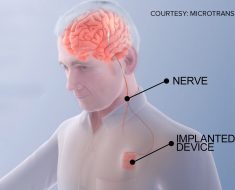The term dysphagia refers to difficulty swallowing. In some cases, the difficulty swallowing may be restricted to food only, while in others, liquids are also difficult to swallow. Some people are unable to swallow at all.
Dysphagia is often a symptom of an underlying condition and diagnosis usually involves establishing the cause so that targeted treatment can be arranged.
Some examples of underlying conditions that can cause dysphagia include:
Nervous system conditions
- Stroke or cerebrovascular accident can lead to paralysis of the muscles involved in swallowing.
- Head injury.
- Neurodegenerative disorders such as Parkinson’s disease, multiple sclerosis, dementia and motor neurone disease also cause paralysis of the muscles involved in swallowing.
- Brain tumors.
- Myasthenia gravis, a condition that leads to intense muscle weakness.
Congenital causes
- Cerebral palsy
- A cleft lip or palate that causes a split in the upper lip (hare lip) or the roof of the mouth
- Severe learning disability
Obstruction
One of the most common causes of dysphagia is obstruction of the upper gastrointestinal tract, which may occur due to:
-
- Cancer of the mouth, throat, larynx or esophagus
- Radiotherapy causing scarring and narrowing of the esophagus
- Gastroesophageal reflux disorder, leading to scarring and narrowing of the esophagus
- Infections of the esophagus including fungal infections and tuberculosis
Muscle disorders
Dysphagia may also be caused by problems in the esophageal muscles. Examples of these include:
- Achalasia cardia – Nerve damage in the esophageal lining impairs the propulsion of food through the esophagus and into the stomach.
- Scleroderma – This is an autoimmune disorder that leads to stiffening of the throat and esophageal muscles.
General measures of diagnosis
Some examples of the types of test a physician may arrange to evaluate suspected cases of dysphagia include:
Water swallow test – Here, the patient swallows 150 ml of water and the time taken to swallow the water as well as the number of swallows required is recorded.
Videofluoroscopy – This is a form of barium swallow test that involves the continuous recording of a moving X-ray, taken as the patient swallows food or drink mixed with barium. This procedure usually takes about thirty minutes.
Manometry and 24 hour pH study – For this test, a catheter with pressure sensors is passed down the esophaguus and used to measure esophageal function. A tube can also be inserted into the esophagus to measure the amount of acid that flows back (refluxes) from the stomach.
Diagnostic gastroscopy – Also known of as a stomach endoscopy, this procedure involves an endoscope being passed down the esophagus and used to record images. This examination can often reveal the presence of scar tissue or growths caused by acid reflux.
Sources
- http://www.nhs.uk/Conditions/Dysphagia/Pages/definition.aspx
- www.worldgastroenterology.org/…/08_dysphagia.pdf
- http://www.sign.ac.uk/pdf/sign119.pdf
- http://txsha.org/_pdf/Brochures/dysphagia.pdf
- http://www.cag-acg.org/uploads/guidelines/cockeram.pdf
Further Reading
- All Dysphagia Content
- Dysphagia -What is Dysphagia?
- Dysphagia Symptoms
Last Updated: Feb 26, 2019

Written by
Dr. Ananya Mandal
Dr. Ananya Mandal is a doctor by profession, lecturer by vocation and a medical writer by passion. She specialized in Clinical Pharmacology after her bachelor's (MBBS). For her, health communication is not just writing complicated reviews for professionals but making medical knowledge understandable and available to the general public as well.
Source: Read Full Article





